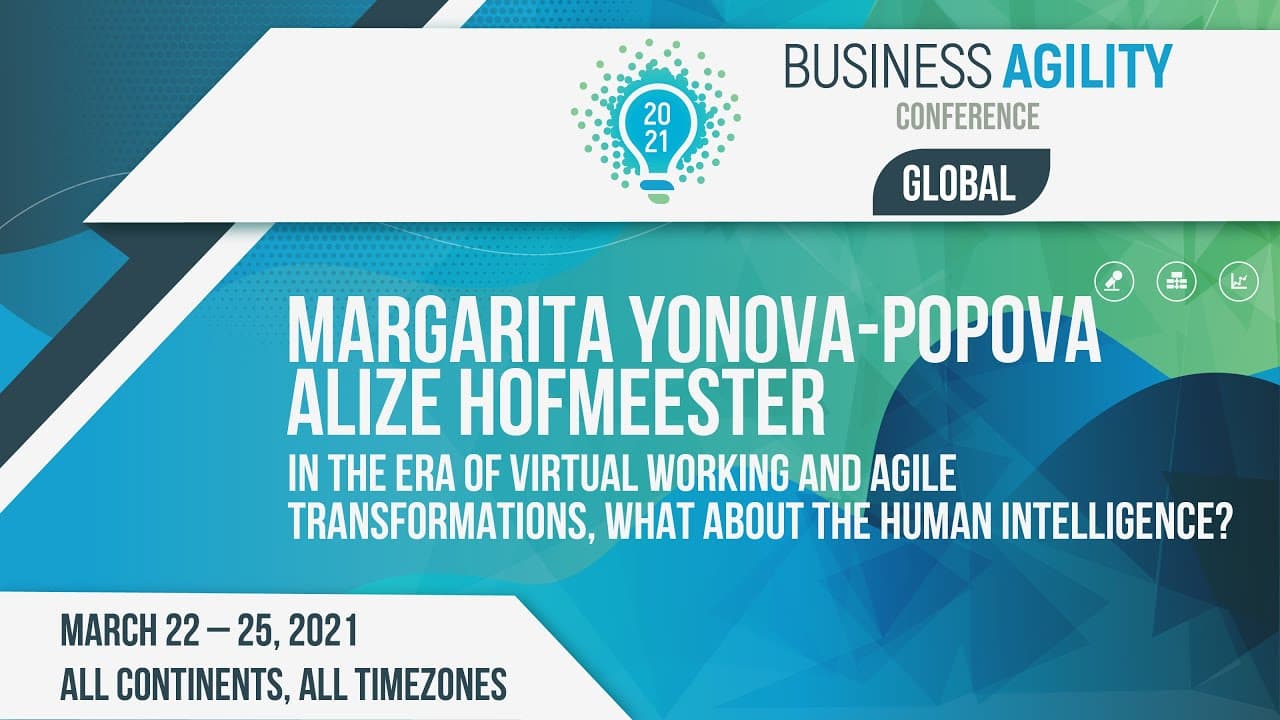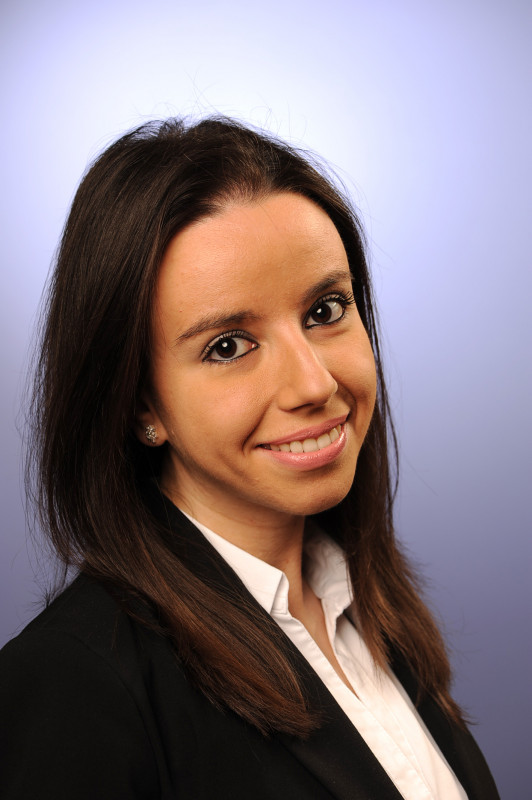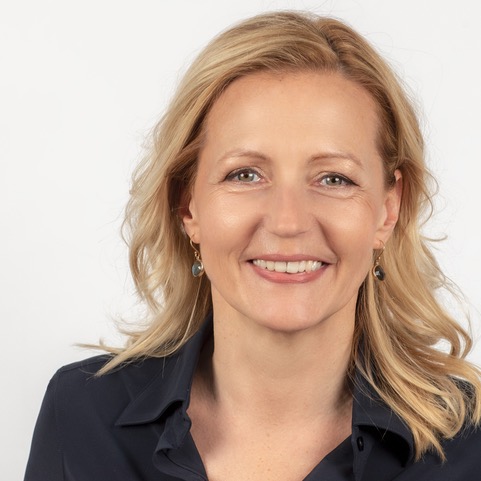Introduction
Alize: Welcome, everybody, and thank you for taking the time to be with us, to listen to our story. Hopefully, we can also answer some of your questions.
The stickies still cover the walls. Some have fallen down, but no one picks them up because the office is empty. Evelyn, the CEO of a large company, sits at her home office desk and stares out the window. At the beginning of 2020, she kicked off a large agile transformation in the organization. They were well on their way. They had changed a substantial part of the organization into new agile structures—tribes, squads, circles, squares. They had also digitalized much of the organization. The office had been completely refurbished to facilitate new methodologies, rituals, and meetings.
And then COVID hit.
Looking at the empty offices, she wonders, What happened? We were so well on our way. We changed everything. But what are we really doing differently? And now, in this virtual setting, I feel like I am losing control.
Like Evelyn, you may have had similar experiences. These experiences are not only due to COVID; we also experienced challenges before. That’s where I met Margarita two years ago at the Business Agility Conference in London. We discovered that we share the same purpose—to promote the importance of the people perspective in every change and transformation.
With a backpack full of experiences and stories, we want to share our insights with you today.
About Us
Alize: My name is Alize Hoffmeister, and I want to introduce myself through my purpose: Gather a team, set up the expedition, sail the waves, and explore beyond horizons. It’s not about discovering new landscapes, but about seeing things in a different way.
For me, key elements are team, trust, and moving forward to share and tell stories. Finding my purpose changed my life and work, helping me find balance. Purpose makes you unique—whether as a person or as an organization. It brings focus and ensures that the work you do truly matters and aligns with your mission. It’s a bumpy road, but it’s fun, energizing, and creates flow.
Because of my purpose, I had the courage to change. After ten years of working in agile transformations at ING, I decided to move on and founded my company, Twinkster. With Twinkster, I help organizations find their own ways of working and thinking—because every organization is unique, and agility is not a one-size-fits-all solution.
I also wrote down my experiences, as well as those of other organizations and individuals, in my book, Purpose-Driven People: Creating Business Agility and Sustainable Growth.
But I’m not here alone. I’m here with Margarita.
Margarita: Thank you, Alize. Hello, everyone! I’m very excited to be here today. My name is Margarita, and I am an Agile Transformation Coach at Erste Group Bank, currently based in Austria.
Alize knows well that my deep purpose and passion as an Agile Transformation Coach is to go beyond agile frameworks and terminology. Instead of overwhelming teams with structures, roles, and jargon, I focus on helping people embrace change in a way that fosters better collaboration, innovation, and co-creation.
I am also the co-founder of the Agile Hub at Erste Group, which reflects my deep belief in the power of collective intelligence. Communities built from the bottom up serve as an energy source for greater business agility.
About Erste Group
Before we continue, let me say a few words about Erste Group. We are one of the leading financial service providers in Eastern Europe, with over 200 years of history, more than 16 million customers, and 45,000 employees. We are proud to have one of the most modern pan-European banking platforms, George, which now has over 6 million customers onboarded across six countries.
Despite heavy disruptions in the banking industry, one thing has not changed: banking is about people. Our deep purpose is to provide prosperity to our customers and help them build financial health. With this purpose in mind, many of our teams embarked on a journey towards more modern, agile ways of working. This journey aims to improve how we collaborate and, ultimately, how we serve our customers.
The People Perspective in Agile Transformations
Alize: When we talk about transformation—whether big or small—we often focus on the visible aspects: AI, digitalization, agile frameworks. However, beneath the surface, there is more at play. Transformation is not just about visible structures but also the invisible aspects of change.
That’s what we want to share with you today—our experiences and what you can do to make transformation a journey that involves everyone, leveraging the full power of human intelligence.
How does that resonate with you, Margarita?
Margarita: Absolutely! When we started experimenting with agile practices in our organization, we quickly realized that it wasn’t just about setting up tribes and scrum teams. It was a deep shift in people’s beliefs and approaches to work.
That’s why we want to share examples of how we support our teams on this journey and reflect on key change principles. These principles, in our experience, are critical to unlocking the power of human intelligence.
The Challenges of Agile Transformation
Alize: Going back to Evelyn at her desk, she sees the benefits of agile transformation—whether at the organizational, commercial, or workforce level. Agile transformation helps organizations become more adaptable, as we saw during COVID.
But even companies that experience these benefits also face challenges:
- Leadership: Agile organizations distribute leadership through self-organizing teams. This requires a shift in leadership mindset.
- Mindset Shifts: What does it really mean to change a mindset?
- Silos: Does agile truly break silos, or does it just shift them?
- Sponsorship: Organizations with strong board-level sponsorship are better able to embrace agility.
- Culture: We all live in our own bubbles. Research shows that while 98% of CEOs believe their organization’s purpose is well understood, only 35% of employees agree.
During my years in agile transformations, I have identified key elements that truly make a transformation work. These elements might not seem new, but the way we approach them in an agile transformation is different.
Previously, transformations were about moving from structure A to structure B. But real transformation is not just about structure—it’s about mindset and behavior.
Margarita, would you like to highlight some of these elements?
Key Elements for Successful Agile Transformation
Margarita: Three elements are particularly important:
- Communication: Instead of framing change as starting from zero, we should recognize and leverage existing practices and experiences. People should feel that they are part of shaping the future, not just reacting to it.
- Community Building: Transformation should not be imposed from the top. It should be co-created with employees, giving them a voice and active role.
- Learning and Experimentation: Agile is about continuous learning. But experimentation should have a clear purpose—what hypothesis are we testing, and what outcome do we seek?
We’ll now dive into real examples of how we’ve applied these principles.
Conclusion
Alize: This was not a success story—it was a story of real experiences. Our call to action for you: imagine your future, live your values, harness collective intelligence, and keep learning.
Margarita: Go beyond the tools. Focus on people, collaboration, and outcomes. Agile is not about implementing frameworks; it’s about fostering an environment where people thrive.
Thank you for joining us today!





